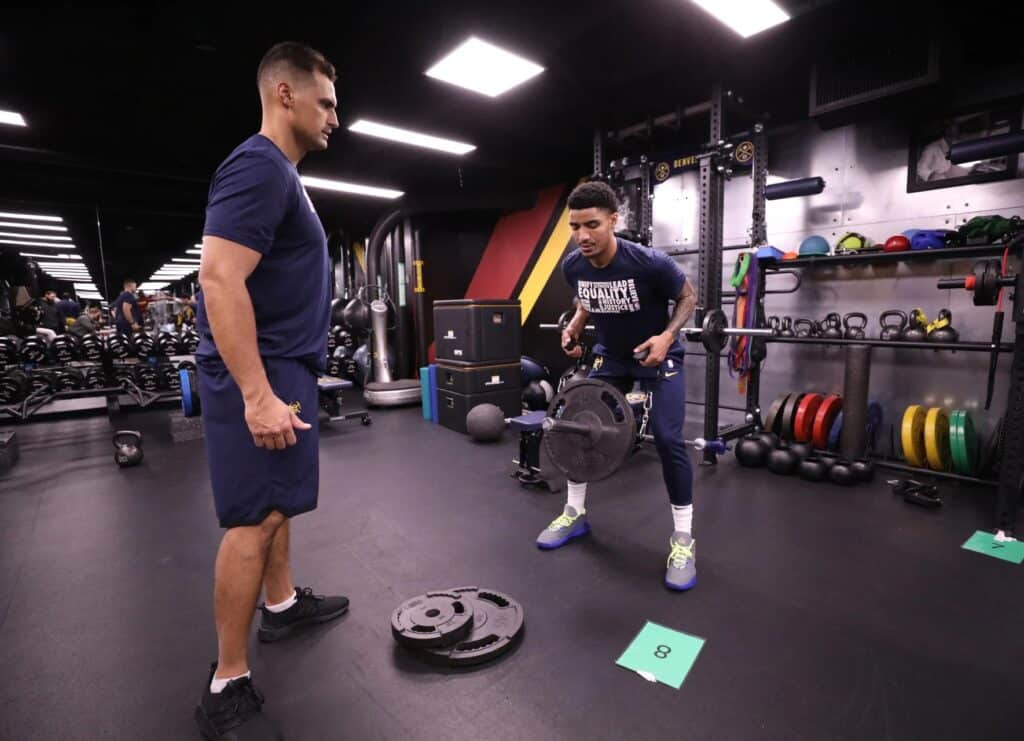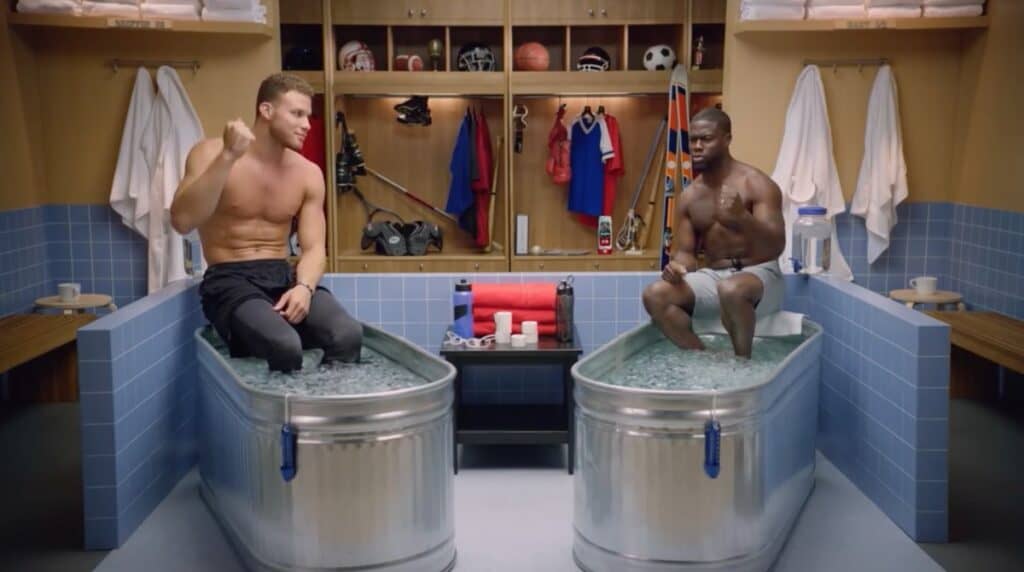Working out after games is a great form of recovery. Working out after intense exercise is known as “active recovery”, and it allows the body to increase blood flow and remove toxins associated with fatigue. The intensity of post-game workouts can vary but are usually lower intensity; NBA players may choose to do exercises for conditioning and strength. Exercise type and intensity also vary based on players; high-minutes guys tend to do less, while low-minutes guys have more energy. Teams that have multiple players engaging in postgame workouts may have tailored plans for each player to optimize their performance and recovery.

What are other popular postgame practices?
Postgame workouts are seemingly beneficial, but it’s not a standard practice in the NBA. It’s usually not a team activity for most organizations, and those who do take it up do so on their own behalf. However, the Phoenix Suns have been known to have a good portion of their roster engaging in postgame workouts going back to a few years; a viral video showed the Suns working out after a franchise record-tying win against the Golden State Warriors. It’s also been recently picked up by the Denver Nuggets, and multiple players such as LeBron James have their own postgame regimens. But truth be told, postgame workouts are still not the definitive course of action after a game.
Probably the most popular form of recovery after NBA practices and games is the ice bath. Yet another weird practice on the surface level, but quite beneficial. Players fill up a tub of water with ice and submerge their lower body in it for a few minutes. Another method is the cryo-chamber, but ice baths are still commonly used in the NBA and in other locker rooms throughout the world.
What exactly does an ice bath do? Well, applying extreme cold to the body has a few effects: it compresses the blood vessels and slows down blood flow, it slows down the metabolic process, and it has a numbing effect. To explain the science, placing oneself in an ice bath reduces inflammation and swelling as well as reducing soreness. It’s a very popular method of recovery among NBA players and trainers as well, and is sometimes one of the first things players do after a game or a workout.
What do NBA players do before games?
Like postgame routines, pregame routines vary quite a bit, even more so than postgame routines. Every player seems to have their routine and ritual, and often there is a level of superstition when it comes to these routines. Some players choose to lift to get ready, others don’t as to not get sore or affect their performance (some players don’t like to lift before games because it “messes up their shot”). Diets are mostly made up of high-carbs and low-fat meals to get the right energy for players.
Teams like to schedule film sessions, pre-game meetings, and shootarounds to get players ready for games. Here, the mental aspect of playing basketball is stressed upon just as much if not more than the physical aspect. For example, shootarounds get players flowing and building chemistry with their teammates.
Are post game recovery methods actually useful?
NBA players and trainers seem to swear by their ice baths and post game workouts, but medical practitioners and researchers are not as quick to endorse these activities. For post game workouts, the goal is to “actively recover” to reduce fatigue and muscle stress. However, an improper post game workout (high-intensity exercises, for example), may as well be the last thing you want to reduce soreness, and may exacerbate the problem.
Ice baths are less popular among doctors, who warn of the negative effects of them. Most significantly, they claim that ice baths are a trade-off that benefits short-term recovery but ultimately hampers the body’s ability to recover naturally in the long-term. Researchers have uncovered a placebo effect, in which players are convinced of the effectiveness of the ice bath (“if it hurts so much, it must work”), and then they claim to see improvements in their recovery and performance. Researchers, suffice it to say, are not as convinced; like doctors, concerns regarding long-term recovery are persistent. It is important to note that the use of ice baths in the NBA is the cause for skepticism, not necessarily the treatment itself; it’s the dependency on and frequency of such methods that can be harmful in the future.

What do the doctors recommend then? The usual: stretching after the game, drinking lots of water, and getting proper sleep. While this may seem traditional and basic, its effects are the most proven and yet still many people, including some NBA players, seem not to prioritize them. Load management is also recommended by doctors, especially when there are many games in a short period of time. While doctors haven’t really endorsed against postgame workouts and ice baths, drinking water, sleeping for the right number of hours, and stretching should reduce dependency on ice baths for example.
After an intense 48 minutes of basketball, you would think the last thing on any player’s mind would be to hit the gym. But NBA players are extremely athletic, and their methods may seem extreme too. However, postgame workouts are actually very beneficial if done right, especially for building strength and improving recovery in a grueling, 82-game season. Moreso, postgame workouts are an embodiment of “winning culture”: just look at the Phoenix Suns, a pioneer for post game workouts, and the Denver Nuggets, two of the biggest championship contenders in the NBA. Also, LeBron James, one of the best athletes in a league full of athletes, and who has dedicated multiple hours and millions of dollars to keep him in shape, can usually be found on a stationary bike after games.
